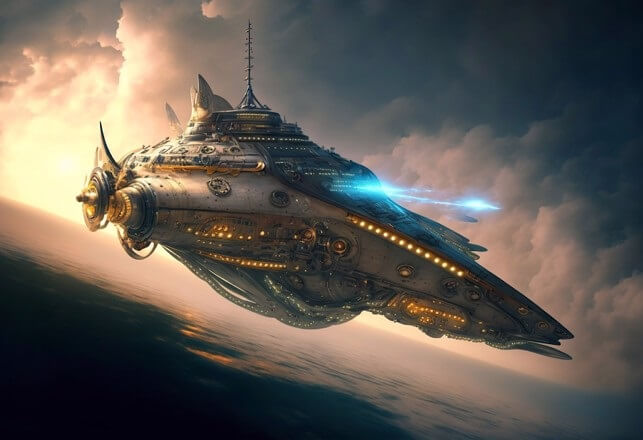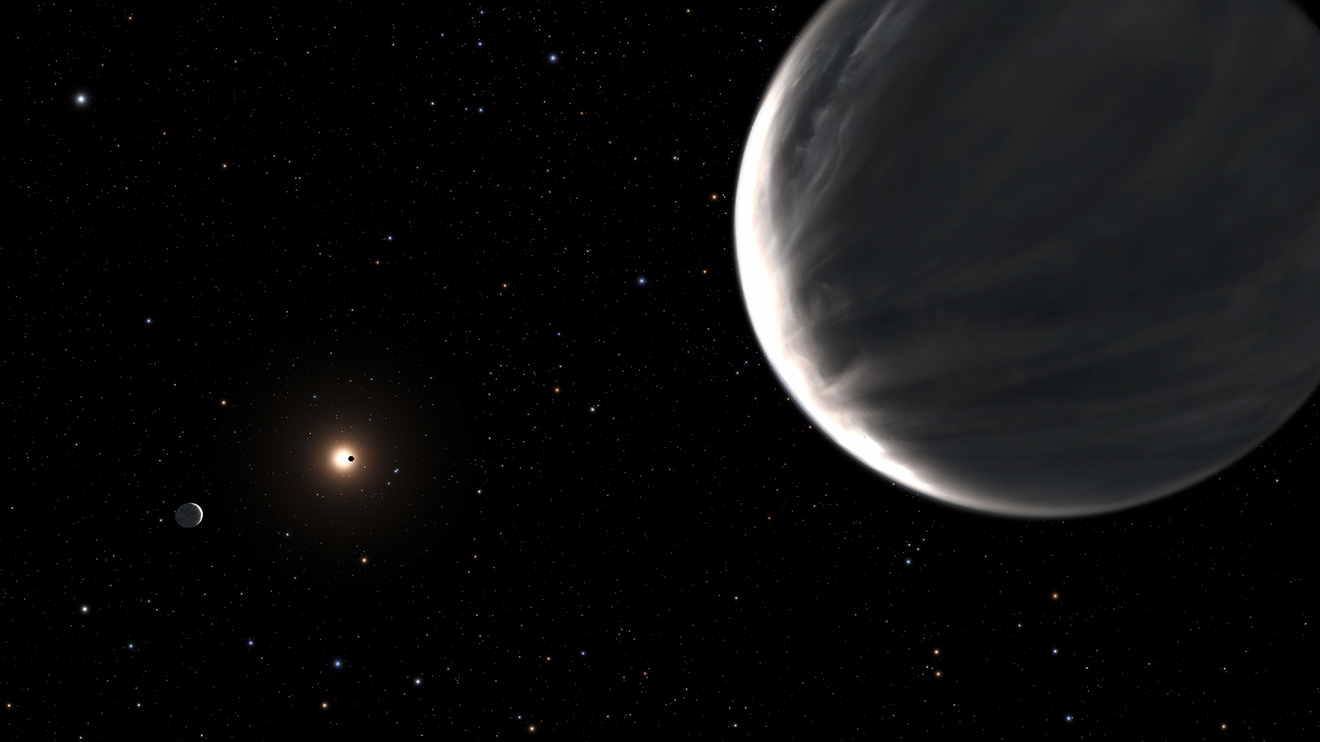
A Viable Alien Spaceship Detector Is Here & Nearby Habitable & Water Covered Planets Have Been Found
For thousands of years, people have wondered, “Are we alone?”. Astronomers have now ascertained, statistically speaking, that every star in our Milky Way Galaxy should have at least one planet and that small rocky planets are extremely common. Our own Galaxy has 100 billion stars, and our Universe has upwards of 100 billion galaxies—making the chance for life elsewhere seem inevitable based on sheer probability. We can say with certainty that, for the first time in human history, we are finally on the verge of being able to search for signs of life beyond our solar system around the nearest hundreds of stars.
By Paul Seaburn | Mysterious Universe
This is a great time to be a space scientist as the latest space telescopes are allowing them to identify more Earth-like planets and planets able to potentially host life. These telescopes also help identify technological signatures that may indicate alien life using machines. All three of those events were discovered recently, making this a huge week for space science. First, two exoplanets with Earth-like masses were discovered orbiting a dwarf star in its habitable “Goldilocks” zone very close to our solar system. Next, two large ocean worlds composed largely of water – something rarely seen – were identified. Finally, scientists found a way to use one of the world’s largest lasers to detect alien warp drives powering alien spaceships.
“Nature seems bent on showing us that Earth-like planets are very common. With these two we now know seven in planetary systems quite near to the sun.”
In a press release announcing a new study published in the journal Astronomy & Astrophysics, lead author Alejandro Suárez Mascareño of the Instituto de Astrofisica de Canarias (IAC) in Spain’s Canary Islands delivers the exciting news that Fermi’s paradox is becoming more … paradoxical. He and other researchers at IAC recently discovered exoplanets GJ 1002b and GJ 1002c orbiting the red dwarf star GJ 1002, which is less than 16 light years from our Solar System. Incredibly, both planets have masses similar to Earth’s and both are in the habitable zone of GJ 1002, which means they could potentially host life similar to that on Earth. Mascareño’s astonishment that he and his team just upped the known list of Earth-like exoplanets from five to seven means Fermi was right when asking where are their inhabitants?

“GJ 1002 is a red dwarf star, with barely one eighth the mass of the Sun. It is quite a cool, faint star. This means that its habitability zone is very close to the star.”
Co-author Vera María Passegger explains that GJ 1002b orbits the star in only 10 days, while a year for GJ 1002c is just over 21 days. Despite that, they were able to be detected by astronomers using the European Southern Observatory (ESO) instrument ESPRESSO (Echelle SPectrograph for Rocky Exoplanets and Stable Spectroscopic Observations) installed at the Very Large Telescope (VLT) in the Atacama desert region of Northern Chile, and the CARMENES (Calar Alto high-Resolution search for M dwarfs with Exoearths with Near-infrared and optical Échelle Spectrographs) at the Calar Alto Observatory in Andalucía, Southern Spain. These instruments collected data on GJ 1002 between 2017 and 2021. CARMENES was especially well-suited for scanning a dim star for exoplanets because it is sensitive over a wide range of near-infrared wavelengths – something no other Earth-based telescope has. However, it still needed ESPRESSO to confirm the two planets. Now that they know where the planets are, Mascareño and other astronomers plan to the ANDES spectrograph on the Extremely Large Telescope (currently under construction on top of Cerro Armazones in the Atacama Desert of northern Chile) to study the atmosphere of GJ 1002c. Take that, Fermi!
“A team led by of researchers at the University of Montreal has found evidence that two exoplanets orbiting a red dwarf star are “water worlds,” where water makes up a large fraction of the entire planet. These worlds, located in a planetary system 218 light-years away in the constellation Lyra, are unlike any planets found in our solar system.”
NASA announced that researchers at the University of Montreal published a report in the journal Nature Astronomy discussing their discovery of two water-covered exoplanets orbiting Kepler-138. That name means it was discovered using data collected by NASA’s now deactivated Kepler Space Telescope. The two watery exoplanets Kepler-138c and Kepler-138d were discovered using NASA’s Hubble and the retired Spitzer space telescopes, and were two of four planets orbiting Kepler-138. The methodology used to determine they were water planets involved comparing their size and mass to known planets – which revealed that their low mass and bigger than Earth size meant at least half of their volume was comprised of materials that are lighter than rocks but heavier than the hydrogen or helium which are the mass of gas giant planets like Jupiter. That left them to conclude that Kepler-138c and Kepler-138d are covered in water like Earth – and unlike all of the other planets in our Solar System and most of the exoplanets discovered so far.

“It is the best evidence yet for water worlds, a type of planet that was theorized by astronomers to exist for a long time.”
Study co-author Björn Benneke, a professor of astrophysics at the University of Montreal, expressed the excitement of the team in making this discovery. However, Caroline Piaulet from the Institute for Research on Exoplanets (iREx) at the University of Montreal and leader of the study, cautioned that the liquid on these planets is not necessarily water – and even if it is, it is not necessarily safe for humans … or other life forms.
“The temperature in Kepler-138d’s atmosphere is likely above the boiling point of water, and we expect a thick, dense atmosphere made of steam on this planet. Only, under that steam atmosphere there could potentially be liquid water at high pressure, or even water in another phase that occurs at high pressures, called a supercritical fluid.”
That eliminates both planets since the researchers discovered to their surprise that Kepler-138c and Kepler-138d are twins when it comes to mass and size. That doesn’t take anything away from their importance as the newest members of the small club of water-world planets.
That covers the new exoplanet discoveries. Another announcement this week has to do with the spaceships intelligent life forms might use for travel between their planets and others in the galaxy. In a deeply scientific and formula-filled study published in the preprint database arXiv, researchers led by physicist Luke Sellers of the University of California Los Angeles proposed that intelligent extraterrestrials would travel in Rapid And/or Massive Accelerating spacecraft, which they called RAMAcraft, potentially powered by warp drives. While any object with mass that accelerates generates gravitational waves, a huge galaxy-galloping RAMAcraft would likely produce sizeable and detectable gravitational waves. If these RAMAcrafts were traveling at about one-tenth of the speed of light, the researchers determined they could be detected using the U.S.-based Laser Interferometer Gravitational-Wave Observatory (LIGO) – the current king of gravitational wave detectors. In the future, the planned DECi-hertz Interferometer Gravitational wave Observatory and Big Bang Observer will be 100 times more sensitive than LIGO and able to spot more RAMAcrafts inside the Milky Way.
Of course, as Fermi might say, ‘possible’ does not necessarily mean ‘real’. We haven’t detected alien life on exoplanets in habitable zones or on water worlds or in alien spaceships yet … but our technology is advancing at speeds that could find them soon. If they exist. For that moment of doubt, we can thank the late Frank Drake and his equation.
Space science needs more optimists!
* * *
Paul Seaburn is the editor at Mysterious Universe and its most prolific writer. He’s written for TV shows such as “The Tonight Show”, “Politically Incorrect” and an award-winning children’s program. He’s been published in “The New York Times” and “Huffington Post” and has co-authored numerous collections of trivia, puzzles and humour. His “What in the World!” podcast is a fun look at the latest weird and paranormal news, strange sports stories and odd trivia. Paul likes to add a bit of humour to each MU post he crafts. After all, the mysterious doesn’t always have to be serious.
READ MORE: Astronomers Have Found A Super Earth Near The Habitable Zone of Its Star
Read more on the search for Habitable Planets: There May Be 300 Million Habitable Planets In Our Galaxy
